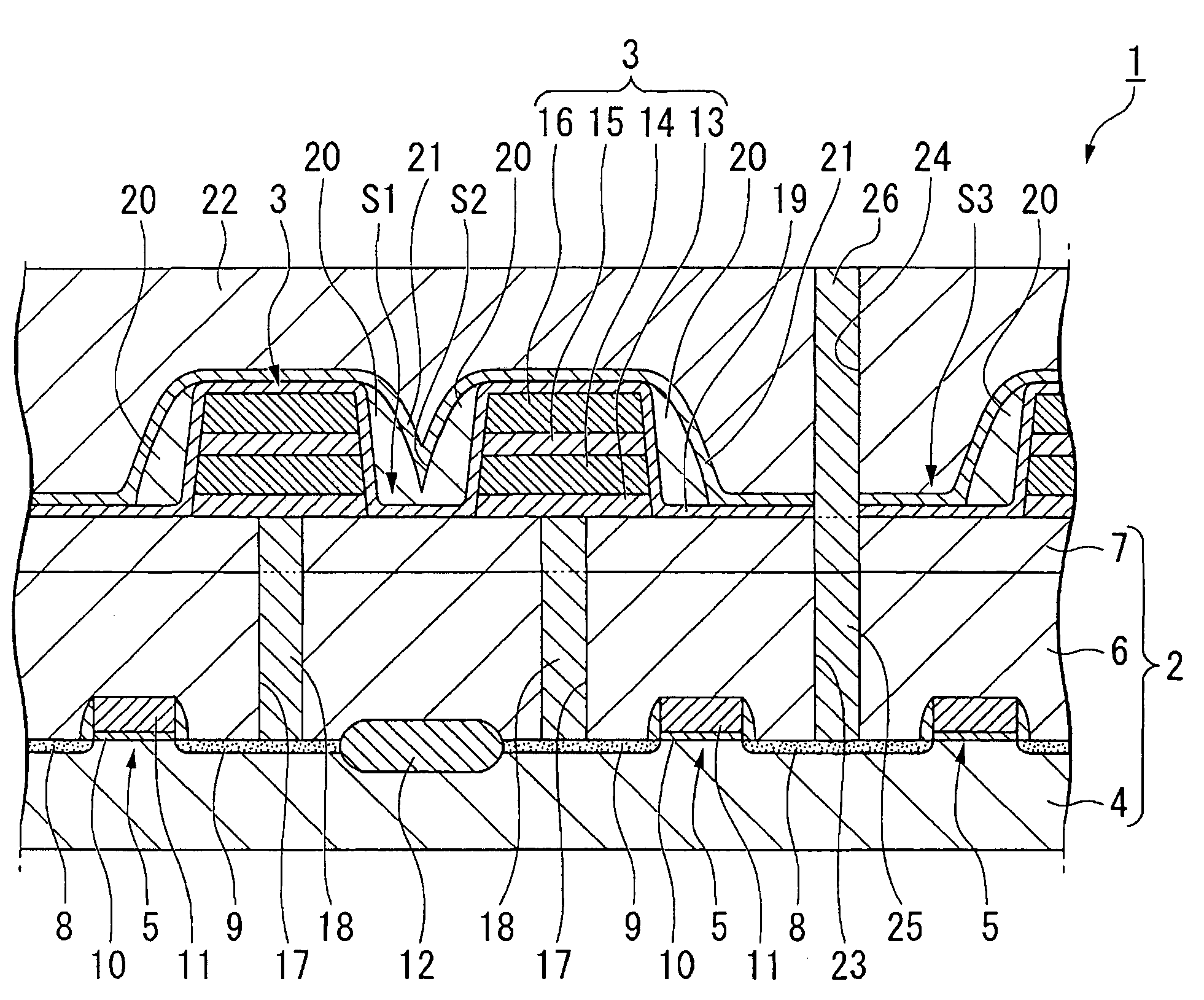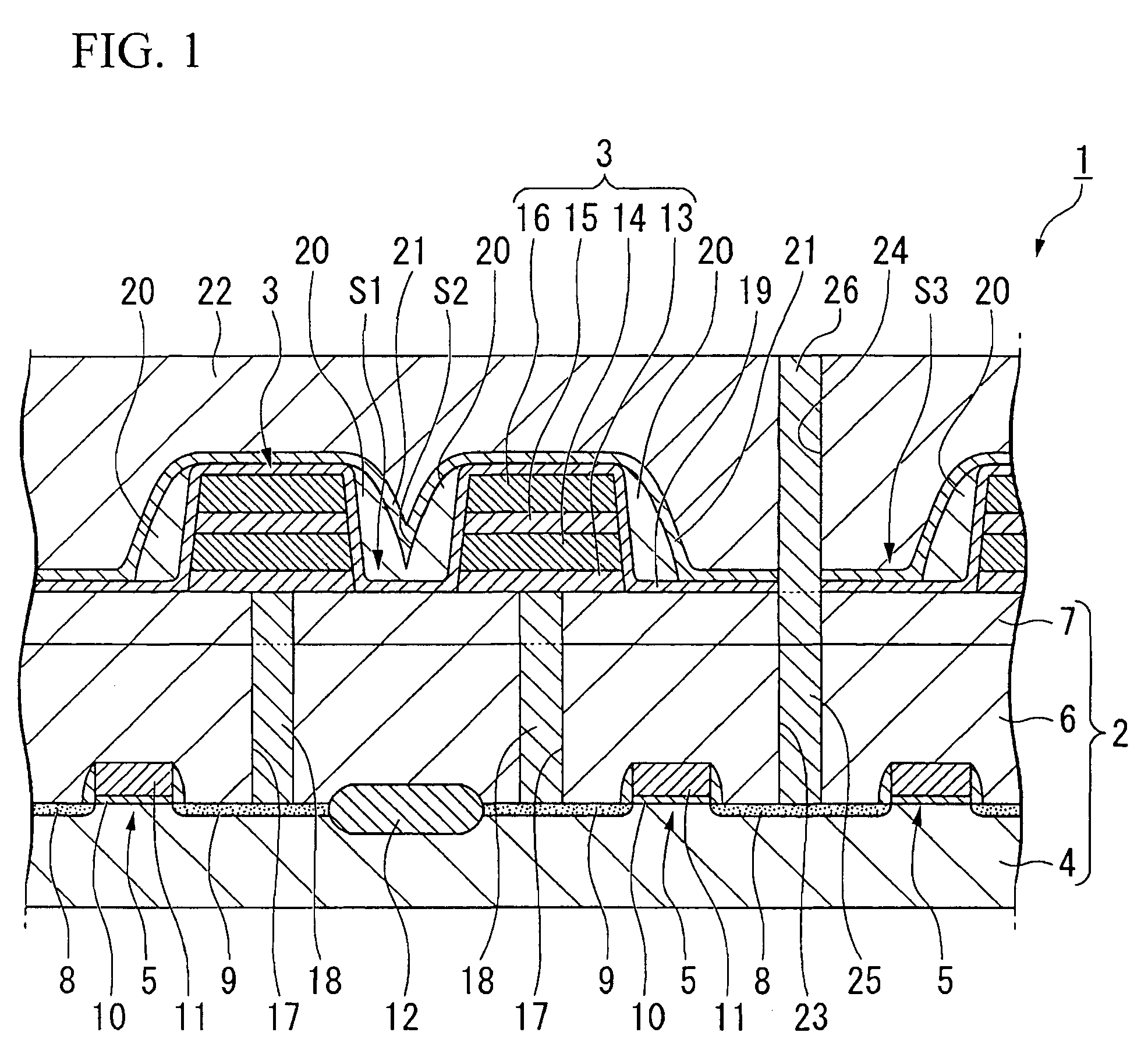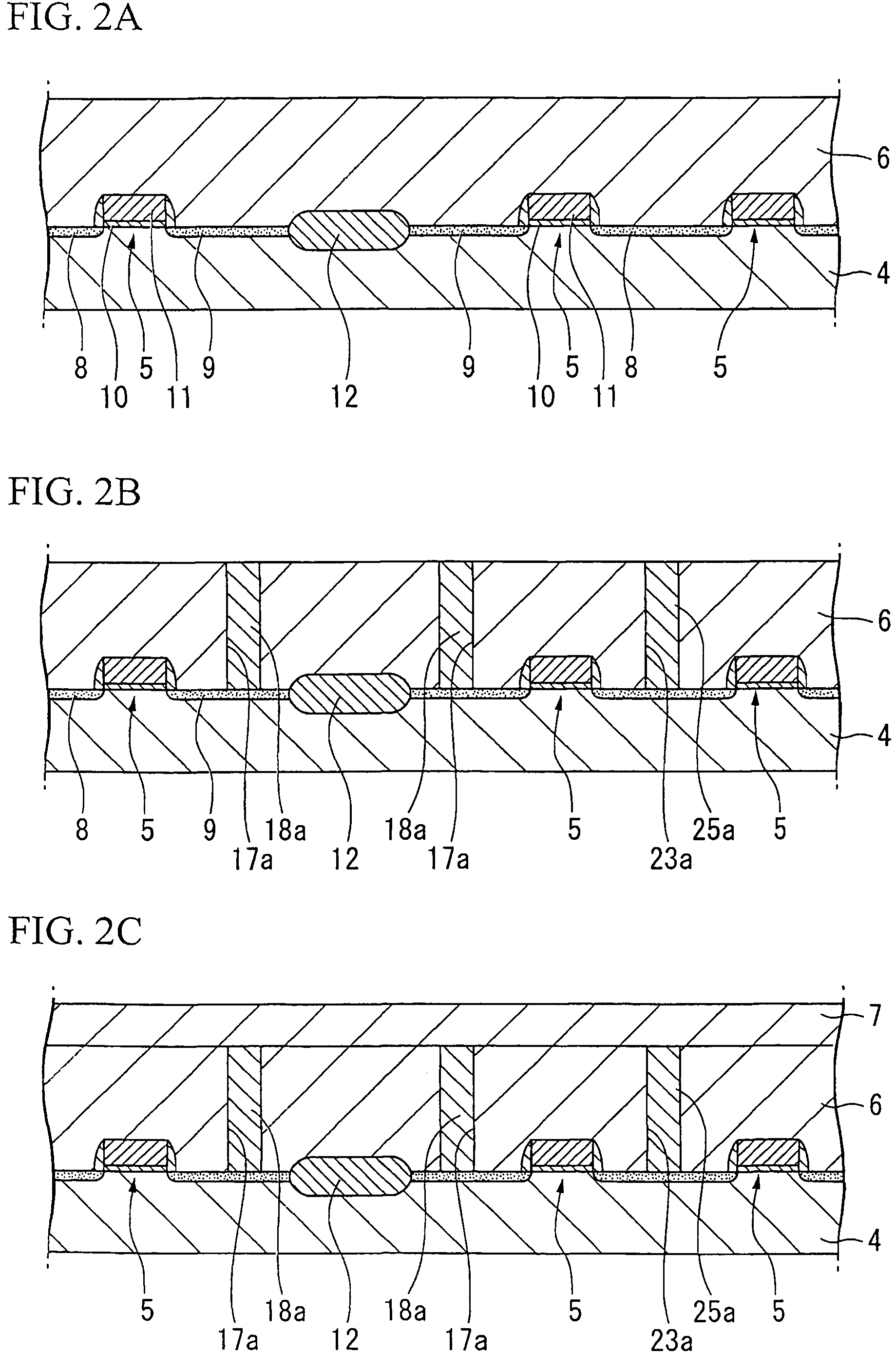Manufacturing method for ferroelectric memory device
a manufacturing method and memory device technology, applied in the direction of electrical equipment, semiconductor devices, capacitors, etc., can solve the problems of deterioration of ferroelectric capacitor characteristics, reduced ferroelectric film, and need for gap-filling techniques, so as to achieve the effect of reliably preventing deterioration of characteristics
- Summary
- Abstract
- Description
- Claims
- Application Information
AI Technical Summary
Benefits of technology
Problems solved by technology
Method used
Image
Examples
Embodiment Construction
[0026]Preferred embodiments of the invention are described in detail below. Prior to describing a manufacturing method for a ferroelectric memory device in accordance with an embodiment of the invention, an example of the ferroelectric memory device obtained by the method is described. FIG. 1 is a schematic cross-sectional view of a ferroelectric memory device manufactured by the manufacturing method in accordance with an embodiment of the invention. Reference numeral 1 in the figure denotes a ferroelectric memory device. The ferroelectric memory device 1 is a 1T / 1C memory cell structure with a stacked type capacitor, and is equipped on a base substrate 2, and ferroelectric capacitors 3 provided on the base substrate 2. This embodiment is described with reference to a 1T / 1C type memory cell structure, but the invention is not limited to a 1T / 1C type.
[0027]The base substrate 2 is formed on a silicon substrate (a semiconductor substrate) 4. Transistors 5 for operating the ferroelectri...
PUM
 Login to View More
Login to View More Abstract
Description
Claims
Application Information
 Login to View More
Login to View More - R&D
- Intellectual Property
- Life Sciences
- Materials
- Tech Scout
- Unparalleled Data Quality
- Higher Quality Content
- 60% Fewer Hallucinations
Browse by: Latest US Patents, China's latest patents, Technical Efficacy Thesaurus, Application Domain, Technology Topic, Popular Technical Reports.
© 2025 PatSnap. All rights reserved.Legal|Privacy policy|Modern Slavery Act Transparency Statement|Sitemap|About US| Contact US: help@patsnap.com



